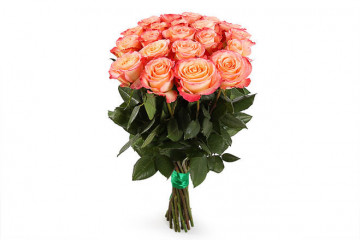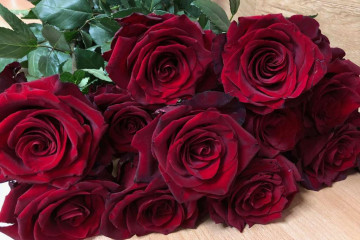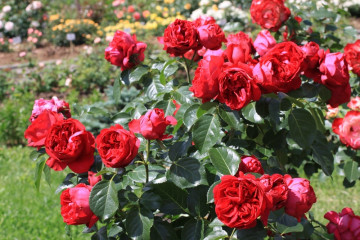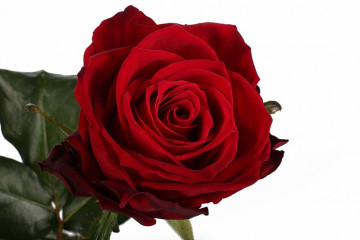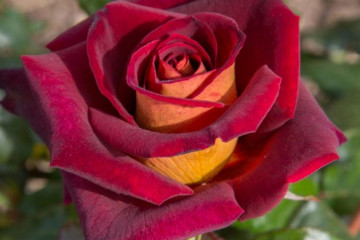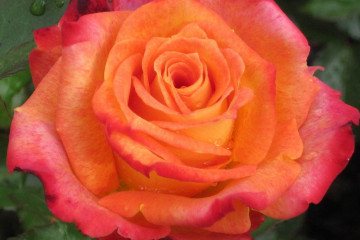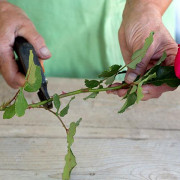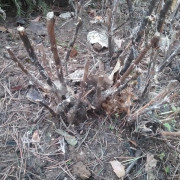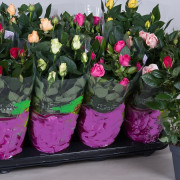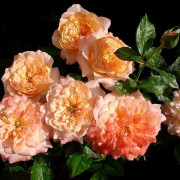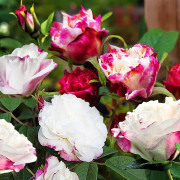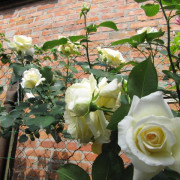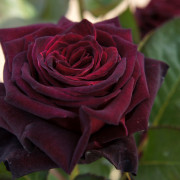Rose Avalanche
Content:
The rose is rightfully called the queen of flowers. It is not surprising that florists around the world are making a lot of efforts to bring out more and more new varieties. And it is no coincidence that the Avalange rose is one of the most famous and popular. Every florist, even a beginner, should know about it.
Rose Avalanche (Avalanche) - what kind of variety, history of creation
The homeland of this variety is Holland - and local growers know a lot about flowers! The variety has excellent characteristics - from external beauty to the ability of cut flowers to stand in a vase for a long time. Therefore, it is definitely worth telling in more detail.
The first thing that catches your eye is the large flowers - up to 13 cm in diameter. It should be borne in mind that Avalange is a white rose. In almost all varieties, the petals are white (one of the exceptions is the Pink Avalange rose, which has rich pink flowers), however, they can have many shades.
The bushes are quite tall, up to 90 cm. Flowers are great for cutting and making bouquets.
Description of the advantages and disadvantages of the variety
One of the important advantages of the variety is its durability. A bouquet in a vase can easily stand for two weeks, and if properly cared for, even longer.
In addition, unlike many varieties, the Avalange rose is not afraid of frost or summer heat. Of course, for this you need to properly protect the plant from the cold, but many varieties would die even in such conditions. And in the summer heat, other roses bloom with small and few flowers, and Avalange, thanks to its powerful root system, can easily cope with this problem.
Finally, Avalange hybrid tea rose boasts an excellent aroma - light, persistent and very pleasant.
There is only one drawback - the difficulty in leaving. The variety is suitable only for experienced florists.
Use in landscape design
In general, Avalange roses are versatile. Suitable for single and group planting, look great both in flower beds and in the center of the lawn. In addition, the plant can be used as a hedge when grown.
Varieties of this variety
In general, there are quite a few varieties of this rose - breeders have been working for many years for a reason. But it is worth telling at least the most interesting ones.
Sweet Avalange
In general, the Sweet Avalange rose was bred primarily for weddings. After all, the flowers are distinguished by their elegance - the outer petals are beige, and the inner ones are pale pink.
Flowers reach 12 cm in diameter, and bushes - 120 cm in height. Sweet Avalanche easily tolerates temperatures down to -20 degrees.
Candy Avalange
A relatively low variety - the bushes rarely grow more than 80 cm. But the flowers are simply luxurious - pale pink.
It is important that the Candy Avalange variety is simply created for cutting - the bouquet in water will last for at least two weeks.
How to properly plant in open ground
Of course, every florist should know about the rules for planting flowers in order to avoid mistakes.
It is best to use seedlings. Still, this is a tea rose, and they do not reproduce well by cuttings and seeds.
The best time is late April - early May, when the threat of night frosts has passed.
Over the summer, the plant will have time to take root and get stronger, which means it will easily survive the winter.
Site selection and soil preparation
The variety is very light-requiring, so it is better to choose the most illuminated area. At the same time, he must be protected from drafts - the rose does not like them.
The optimum acidity of the soil is from 5.6 to 7.3 pH. If the figure is lower, you can add peat or manure. At low acidity, the soil is fertilized with lime or ash.
It is better to grow a rose on light soil, so if necessary, the earth must be mixed with sand.
Planting procedure step by step
Everything is simple here:
- Dig a hole 50 cm deep.
- Fill up with drainage 10 cm (pebbles, broken brick, crushed stone).
- Apply fertilizer and suitable soil.
After that, you can plant flowers in open ground.
Plant care
But it is not enough just to plant roses of the Avalange variety - you also need to provide them with appropriate care.
- Watering rules and humidity
In the absence of precipitation, roses need to be watered twice a week, 20 liters of water under a bush.
- Top dressing and soil quality
It is best to use organic fertilizers such as compost or humus.
For watering, you need to use only warm water - from the cold, the plant can get sick.
- Pruning and replanting
Pruning is done in the spring, removing diseased and dried branches.
A rose transplant is quite easy, especially if the land is rich in nutrients in a new place.
- Features of wintering a flower
Avalange easily tolerates frosts down to -20 degrees. If the winters are more severe, then appropriate shelters are needed so that the plant does not freeze.
Blooming rose
Avalange blooms simply divinely. But in order for the flowering to be regular, you need to know certain nuances.
A healthy bush begins to bloom in May and ends at the end of August. All cold seasons - from late October to mid-April - are dormant.
Care during and after flowering
After the first wave of flowering, it is advisable to feed the bushes with potassium so that the second wave is no less abundant than the first.
At the end of summer, fertilizing with nitrogen and potassium is not carried out - only phosphorus.
What to do if it does not bloom, possible reasons
The reasons for the lack of colors can be different, for example:
- old age of the bush,
- lack of nutrients
- poor lighting,
- incorrect cropping.
Having identified the cause, it must be eliminated as soon as possible before the plant dies.
Flower propagation
Of course, every grower who grows roses would want to know not only about care, but also about the reproduction of these gorgeous bushes.
The most suitable time is the end of June, after the first wave of flowering. The best weather is cloudy, and the time is in the late afternoon.
The selected branch is strong, with several leaves and a length of at least 12 cm, carefully cut with pruning shears.
After that, the leaves are removed, and the shoot is dipped into a solution of a root growth stimulator. When the roots appear 2-3 cm long, the seedling can be planted in open ground.
In the early days, it is advisable to shade it so that the plant does not die from direct sunlight. Phosphorus can be added to stimulate root development.
Diseases, pests and ways to control them
In general, diseases bypass this variety - the experience of breeders affects.
And of insects, only aphids are dangerous. It is quite easy to deal with it - you need to spray the plant with soapy water or any insecticide.
Keeping these simple rules in mind, even a novice florist can easily arrange a gorgeous rose garden in the country or in the garden, which will delight others with a beautiful view and smell throughout the summer.




